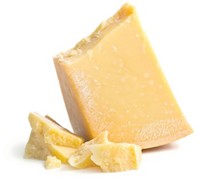Advertisement
Grab your lab coat. Let's get started
Welcome!
Welcome!
Create an account below to get 6 C&EN articles per month, receive newsletters and more - all free.
It seems this is your first time logging in online. Please enter the following information to continue.
As an ACS member you automatically get access to this site. All we need is few more details to create your reading experience.
Not you? Sign in with a different account.
Not you? Sign in with a different account.
ERROR 1
ERROR 1
ERROR 2
ERROR 2
ERROR 2
ERROR 2
ERROR 2
Password and Confirm password must match.
If you have an ACS member number, please enter it here so we can link this account to your membership. (optional)
ERROR 2
ACS values your privacy. By submitting your information, you are gaining access to C&EN and subscribing to our weekly newsletter. We use the information you provide to make your reading experience better, and we will never sell your data to third party members.
Environment
Wine's Mycotoxin Profile Grows
Another fungal toxin associated with grains is present in wines worldwide
by Elizabeth K. Wilson
March 22, 2010
| A version of this story appeared in
Volume 88, Issue 12

As they raise a glass, most wine drinkers would prefer to ponder the ancient beverage’s possible health benefits—lowering cholesterol, improving heart health—rather than its possible contamination with carcinogenic, kidney-destroying fungal toxins.
But dangerous mycotoxins produced by fungus species are found in wine. Mycotoxins are longtime contaminants as old as food itself. Multitudes of toxin-producing fungi invade grains, peanuts, coffee, grapes, and other foods. Wine, by association with grapes, is not immune: It can contain small amounts of aflatoxins, which are carcinogens most notoriously associated with peanuts, and ochratoxin A, found in decaying fruits. Allowable amounts of these toxins in foods are heavily regulated by the U.S. and European governments.
Now, chemists have discovered that yet another mycotoxin, known as fumonisin B2, once thought to be mainly a problem in grains, also exists in wine (J. Agric. Food. Chem., DOI: 10.1021/jf904520t). Kristian F. Nielsen, who heads the analytical facilities lab at the Center for Microbial Biotechnology at the Technical University of Denmark, and his colleagues Thomas O. Larsen and Jesper M. Mogensen used an augmented analytical technique to discover that 23% of 77 wines they tested contain fumonisin B2.
Before you throw out your bottles of Châteauneuf du Pape, consider that as with many foods, levels of these toxins are quite low, well below government standards set in most countries. But the new work suggests a need for further study of fumonisins in wine, the researchers say.
The family of fumonisins, which are toxic to the liver and kidneys in animals, were discovered in the late 1980s. They’re produced by Fusarium molds, which thrive on grain products. Since their discovery, the U.S. Food & Drug Administration and the European Economic Community have set limits for concentrations in foods.
“Until 2007, we did not think that any fungi growing on grapes could produce fumonisins,” Nielsen says. “Thus there was no reason to search for them.” But only three years ago, scientists discovered that a non-Fusarium fruit-loving fungus, Aspergillis niger, can also produce fumonisins B2, B4, and B8 (J. Agric. Food. Chem. 2007, 55, 9727). Because this fungus preys on fruit, scientists began looking for traces of fumonisins in crops such as grapes.
In the past year, several groups around the world, including Nielsen’s, have detected fumonisins in grapes, raisins, and must. It was then a short leap from grapes to wine. Because wine contains a plethora of potentially confounding compounds, such as tannins and anthocyanins, Nielsen’s group developed a cation-exchange method to purify samples before subjecting them to chromatographic and mass spectrometric studies.
They put to the test 77 different wines from all over the world, including red and white varieties and vintages ranging from 1991 to 2008. Eighteen of the wines contained some fumonisin B2, some with only 1 μg/L. Sorry, Californians: The wine with the highest level of fumonisin B2 was a 1998 California Zinfandel, with 25 μg/L. But the group found no correlation with year, variety, or location.
Chris M. Maragos, who studies fumonisins at the U.S. Department of Agriculture’s Agricultural Research Service in Peoria, Ill., notes that “the highest level found in the wine (25 μg of fumonisin B2 per liter) is still only about 1% of the guidance level for fumonisins in maize.” The guidance level in maize was reached with significant scientific input, as well as with public comment, he adds, “so it does represent a reasonable value given what we know about the toxicity and prevalence of the fumonisins.”
The effect of the discovery on the wine industry and the response of regulatory agencies are yet to be determined. Norma R. Hill, chief of the Tobacco Tax & Trade Bureau’s Compliance Monitoring Laboratory, in Walnut Creek, Calif., whose group has studied mycotoxins in alcoholic beverages, declined to comment on the issue as this article was going to press.




Join the conversation
Contact the reporter
Submit a Letter to the Editor for publication
Engage with us on Twitter